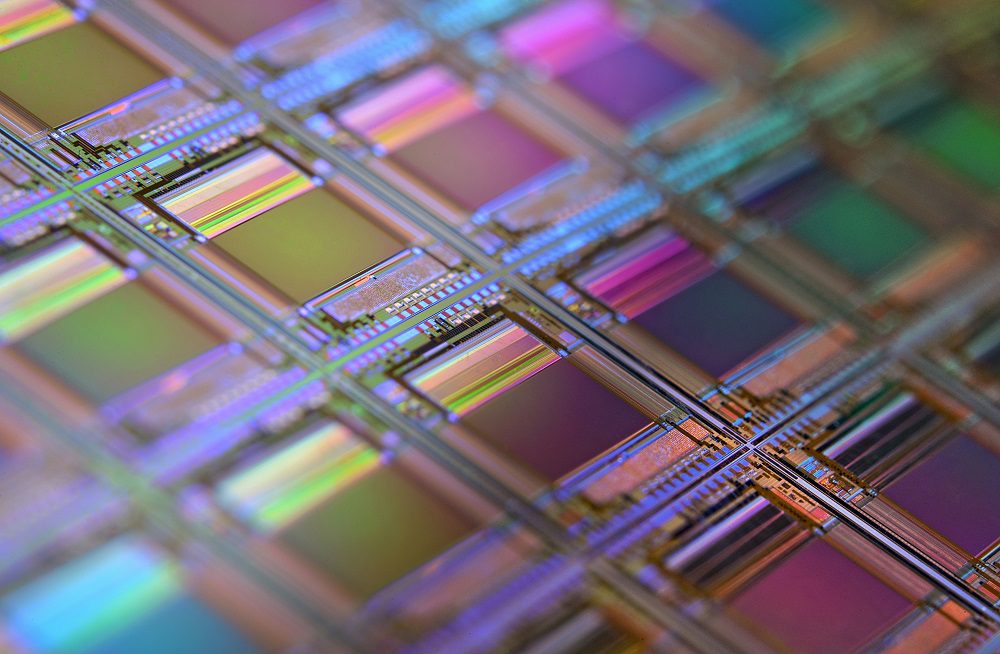
Marvell unveils 2nm AI memory chips, setting a new standard for data center performance. These chips, paired with a cutting-edge power regulator, optimize AI and cloud computing workloads. The technology promises up to 66% less power consumption and 15% smaller chip designs. This breakthrough positions Marvell as a leader in next-generation AI infrastructure.
Key Takeaways
- Marvell’s 2nm SRAM chips enhance AI and cloud computing efficiency.
- Power regulator reduces energy use by up to 66%.
- Chip designs recover up to 15% of die area.
- Targets data centers for high-speed, low-power performance.
- Strengthens Marvell’s role in AI infrastructure innovation.
The Dawn of 2nm Technology
Contents
- 1 Why 2nm Matters for AI
- 2 Marvell’s Role in AI Innovation
- 3 Custom SRAM: A Game-Changer
- 4 Applications in AI and Cloud
- 5 How It Enhances Efficiency
- 6 Impact on Data Centers
- 7 Standing Out in the Semiconductor Race
- 8 Future-Proofing AI Infrastructure
- 9 Scaling 2nm Production
- 10 Meeting AI’s Growing Demands
- 11 Redefining Data Center Design
- 12 Boosting AI Adoption
- 13 For Businesses
- 14 For Consumers
- 15 1. What are Marvell’s 2nm AI memory chips?
- 16 2. How do these chips improve AI performance?
- 17 3. What is the role of the power regulator?
- 18 4. How do these chips benefit data centers?
- 19 5. Who uses Marvell’s 2nm chips?
- 20 6. Are these chips sustainable?
- 21 7. What challenges does Marvell face?
- 22 8. How do these chips impact consumers?
- 23 9. What is the future of 2nm technology?
- 24 10. Why is Marvell’s launch significant?
Why 2nm Matters for AI
The shift to 2nm technology marks a significant milestone. Smaller nodes mean faster, more efficient chips. AI workloads demand massive data processing. Marvell’s 2nm SRAM delivers up to 6 gigabits of high-speed memory. This supports complex neural networks and machine learning tasks. Data centers can now handle more with less energy.
Marvell’s Role in AI Innovation
Marvell has long been a key player in semiconductors. Its focus on AI-driven solutions is timely. The global AI market is projected to reach $1.8 trillion by 2030. Marvell’s 2nm chips align with this growth. They cater to hyperscale cloud providers like Amazon and Meta. These companies need efficient silicon for AI infrastructure.
Inside Marvell’s 2nm AI Memory Chips
Custom SRAM: A Game-Changer
Marvell’s custom SRAM is the industry’s first at 2nm. It operates at up to 3.75 GHz. This speed supports real-time AI processing. The chips are designed for scalability. They integrate seamlessly into data center architectures. This flexibility makes them ideal for cloud and edge computing.
Power Efficiency Breakthroughs
Power consumption is a major challenge for AI. Marvell’s chips address this head-on. They reduce power usage by up to 66%. This is achieved through advanced power regulators. These regulators optimize voltage delivery. The result is cooler, more efficient data centers. Energy savings translate to lower operational costs.
Space-Saving Design
Chip size matters in modern designs. Marvell’s 2nm SRAM recovers up to 15% of die area. This allows for denser, more powerful chips. Smaller designs mean more transistors per chip. This boosts performance without increasing footprint. Data centers can pack more computing power into limited spaces.
Applications in AI and Cloud
These chips are built for AI-driven workloads. They excel in deep learning and generative AI. Cloud providers benefit from faster data processing. Applications include natural language processing and image recognition. The chips also support high-performance computing (HPC). This makes them versatile for scientific research and simulations.
The Power Regulator: A Silent Hero
How It Enhances Efficiency
Marvell’s power regulator is a standout feature. It dynamically adjusts power delivery. This ensures chips operate at peak efficiency. The regulator minimizes energy waste. It also extends chip lifespan by reducing heat. This is critical for 24/7 data center operations.
Impact on Data Centers
Data centers consume vast amounts of energy. In 2024, global data center electricity use reached 300 TWh. Marvell’s regulator could cut this significantly. Lower energy costs benefit cloud providers. They can pass savings to customers. This also aligns with sustainability goals. Green data centers are a growing priority.
Marvell’s Competitive Edge
Standing Out in the Semiconductor Race
The semiconductor industry is fiercely competitive. Nvidia and AMD dominate AI chip headlines. Yet, Marvell’s 2nm SRAM carves a unique niche. Its focus on memory and power efficiency complements GPU advancements. Partnerships with Meta and Amazon strengthen its market position.
Collaboration with Tech Giants
Marvell collaborates with leading cloud providers. Its chips are tailored for their AI infrastructure. For example, Amazon’s AWS relies on efficient silicon. Marvell’s technology supports AWS’s growing AI services. Meta’s AI-driven platforms also benefit. These partnerships drive Marvell’s innovation pipeline.
Future-Proofing AI Infrastructure
AI workloads are evolving rapidly. Generative AI models like GPT-4 demand more memory. Marvell’s 2nm chips are future-ready. They support next-gen AI applications. From autonomous vehicles to smart cities, the potential is vast. Marvell is poised to shape AI’s future.
Challenges and Opportunities
Scaling 2nm Production
Producing 2nm chips is complex. It requires advanced manufacturing. TSMC, a key foundry partner, leads in 2nm fabrication. However, yields must improve for mass production. Marvell’s early launch gives it a head start. Scaling will be critical to meet demand.
Meeting AI’s Growing Demands
AI’s appetite for computing power is insatiable. By 2027, AI data centers may consume 500 TWh annually. Marvell’s chips address this challenge. Their efficiency reduces energy strain. Yet, competition will intensify. Marvell must innovate continuously to stay ahead.
Industry Implications
Redefining Data Center Design
Marvell’s technology influences data center architecture. Smaller, efficient chips enable compact designs. This reduces cooling and space requirements. Hyperscale data centers can scale faster. The result is more agile cloud services.
Boosting AI Adoption
Efficient chips lower AI’s cost barrier. Businesses can deploy AI solutions affordably. From startups to enterprises, access improves. This democratizes AI innovation. Marvell’s chips could accelerate AI adoption across industries.
Why This Matters to You
For Businesses
Companies relying on cloud services benefit directly. Faster, cheaper AI processing enhances operations. From e-commerce to healthcare, AI drives efficiency. Marvell’s chips make this accessible. Businesses can stay competitive in an AI-driven world.
For Consumers
Consumers enjoy better services. AI-powered apps run smoother. Cloud-based gaming and streaming improve. Energy savings may lower costs indirectly. Marvell’s innovation trickles down to everyday tech.
Summary
Marvell’s 2nm AI memory chips and power regulator are transformative. They deliver unmatched efficiency for AI and cloud computing. With up to 66% less power use and 15% smaller designs, they redefine data center performance. These chips support high-speed AI workloads, from deep learning to HPC. Marvell’s partnerships with Amazon and Meta highlight its industry impact. Despite production challenges, this launch positions Marvell as a leader in AI infrastructure. The technology promises greener data centers and broader AI adoption. For businesses and consumers, the benefits are clear: faster, more affordable AI-driven services.
FAQs
1. What are Marvell’s 2nm AI memory chips?
Marvell’s 2nm AI memory chips are custom SRAM designed for AI and cloud computing. They offer high-speed memory and energy efficiency.
2. How do these chips improve AI performance?
They provide up to 6 gigabits of high-speed SRAM. This supports faster data processing for AI workloads like deep learning.
3. What is the role of the power regulator?
The power regulator optimizes voltage delivery. It reduces power consumption by up to 66% and minimizes heat.
4. How do these chips benefit data centers?
They cut energy use and recover 15% of chip area. This lowers costs and enables compact, efficient data center designs.
5. Who uses Marvell’s 2nm chips?
Cloud providers like Amazon and Meta use them. They support AI infrastructure for services like AWS and AI-driven platforms.
6. Are these chips sustainable?
Yes, they reduce energy consumption significantly. This aligns with green data center initiatives and sustainability goals.
7. What challenges does Marvell face?
Scaling 2nm production is complex. Marvell must improve yields and compete in a crowded AI chip market.
8. How do these chips impact consumers?
Consumers benefit from faster AI-powered services. Cloud gaming, streaming, and apps improve with efficient chips.
9. What is the future of 2nm technology?
It will power next-gen AI applications. From autonomous vehicles to smart cities, 2nm chips are future-ready.
10. Why is Marvell’s launch significant?
It sets a new standard for AI infrastructure. Marvell’s chips drive efficiency, innovation, and broader AI adoption.
STAY AHEAD OF THE CURVE WITH THE LATEST TECH INSIGHTS AND UPDATES! FOR MORE TECH-RELATED NEWS, VISIT TECHBEAMS.


